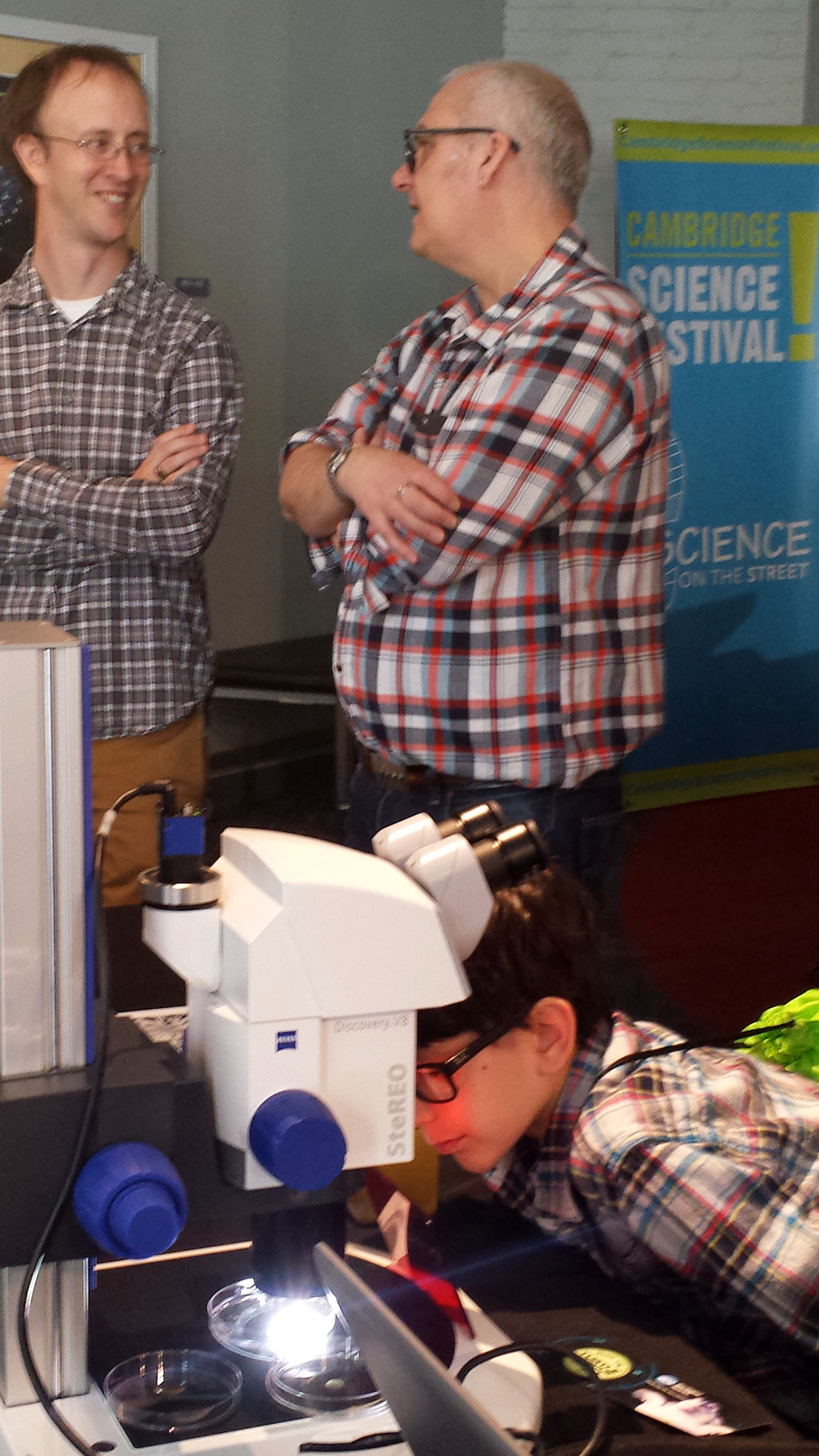Featured Stories
-
Featured Stories, MIT - The Darwin Project, News | November 6, 2017
What you Can Do With a Really Rather Realistic Ocean Model
In a new paper from the Darwin Project, MIT researchers report on their work weighing biogeochemical versus ecological consequences of the way in which ocean physics is represented in their general circulation/ biogeochemical hybrid modeling. -
Featured Stories, News, WHOI News | October 31, 2017
Bay State Aquaculture Projects Get Green Light from National Sea Grant Program
Two new grants to the Woods Hole Sea Grant program totaling more than $650,000 will support research aimed at expanding aquaculture production in Massachusetts. The projects won funding as part of a national strategic investment in aquaculture by the NOAA Sea Grant Program. -
Featured Stories, MIT Sea Grant, News | October 30, 2017
MIT Sea Grant funds aquaculture technology project
MIT Sea Grant is excited to announce the funding an aquaculture technology development project, "Real-time detection of Vibrio for oyster aquaculture," one of the 32 research grants NOAA has announced today, totaling $9.3 million for projects around the country to further develop the nation’s marine and coastal aquaculture industry. -
Featured Stories, MIT News, News | October 26, 2017
Ocean sound waves may reveal location of incoming objects
New acoustic analysis could pinpoint impacts by meteorites or possibly plane debris. -
Featured Stories, MIT, News | October 24, 2017
Studying the Humble Clam Leads to Environmental Work
Profile of MIT alum Joan V. Ruderman, PhD ’74 -
Featured Stories, MIT Sea Grant, News | October 23, 2017
River herring resource use in natural and restored Massachusetts estuaries
In this video, MIT Sea Grant has teamed up with the Massachusetts Bays National Estuary Program (MassBays) to characterize the benefits of MassBays priority embayments in support of local river herring populations. -
Featured Stories, MIT, News, WHOI | October 16, 2017
SCARF 2017: A Modern-Day Transatlantic Crossing
Graduate student Hannah Mark reflects on the SCARF (Student-led Cruise Along a Ridge Flowline) voyage as they crossed the Atlantic from the Azores to Woods Hole. -
Featured Stories, MIT, MIT News, News | October 16, 2017
Hydrogel that Extracts Uranium from Water Wins MADMEC
Teams developing materials solutions for ships and buildings split second and third prizes. -
Featured Stories, MIT, MIT EAPS, News, WHOI | October 10, 2017
Who’s Who? Who’s New?
MIT-WHOI Joint Program members Kevin Archibald, Camrin Braun, Christina Hernandez, and Andrew Hirzel join the EAPS department's as its first Biological Oceanography graduate students. -
Featured Stories, News, WHOI News | October 10, 2017
Study Identifies Whale Blow Microbiome
A new study by the Woods Hole Oceanographic Institution (WHOI) and colleagues identified for the first time an extensive conserved group of bacteria within healthy humpback whales' blow—the moist breath that whales spray out of their blowholes when they exhale. -
Featured Stories, News, WHOI News | October 4, 2017
Fueling the Future
WHOI Awarded $5.7M to Advance Seaweed Energy Production -
Featured Stories, News, WHOI News | October 2, 2017
Scientists Find New Source of Radioactivity from Fukushima Disaster
Scientists have found a previously unsuspected place where radioactive material from the Fukushima Dai-ichi nuclear power plant disaster has accumulated—in sands and brackish groundwater beneath beaches up to 60 miles away. The sands took up and retained radioactive cesium originating from the disaster in 2011 and have been slowly releasing it back to the ocean. -
Featured Stories, MIT Sea Grant, News | September 30, 2017
A Small Ocean Acidification Sensor Could Serve a Large Need
Dr. Aleck Wang, a MIT Sea Grant funded scientist at the Woods Hole Oceanographic Institution designed the Channelized Optical System (CHANOS) II, the first DIC sensor that can make near-continuous measurements, allowing researchers a picture into how these variables change over spatial scales as small as a centimeter -
Featured Stories, MIT, MIT News, News | September 22, 2017
Technique Spots Warning Signs of Extreme Events
Method may help predict hotspots of instability affecting climate, aircraft performance, and ocean circulation. -
Featured Stories, MIT, MIT EAPS, News | September 21, 2017
What Do Hurricanes Harvey and Irma Portend?
MIT prominent meteorologist and climate scientist Kerry Emanuel discusses projections of changing hurricane activity over the rest of this century and what such projections tell us about how the probabilities of hurricanes like Harvey and Irma have already changed and are likely to continue to do so. -
Featured Stories, MIT, MIT EAPS, MIT News, News | September 21, 2017
Mathematics Predicts a Sixth Mass Extinction
By 2100, oceans may hold enough carbon to launch mass extermination of species in future millennia. -
Featured Stories, MIT, MIT EAPS, News | September 20, 2017
Deep Waters Spiral Upward Around Antarctica
New research reveals upwelling pathways and timescales of deep, overturning waters in the Southern Ocean. -
Featured Stories, MIT, MIT EAPS, News | September 7, 2017
“EarthArt” exhibit at Hayden Library
See your art and data displayed on the illuminated iGlobe -
Featured Stories, MIT, MIT EAPS, News, WHOI | September 7, 2017
Back to School 2017
MIT's Department of Earth, Atmospheric and Planetary Sciences welcomes 28 new graduate students. Sixteen join the Program in Atmospheres, Oceans and Climate; fourteen, the MIT-WHOI Joint Program. -
Featured Stories, MIT, MIT EAPS, News, WHOI - Oceanus | September 6, 2017
How Do Fish Find Their Way?
Hatched in the ocean, larvae may use sound to settle on reefs. MIT-WHOI Joint Program in Oceanography graduate student Justin Suca is investigating whether tiny larval fish use sound to navigate from the open oceans where they hatch to coral reefs where they will settle down and live.






